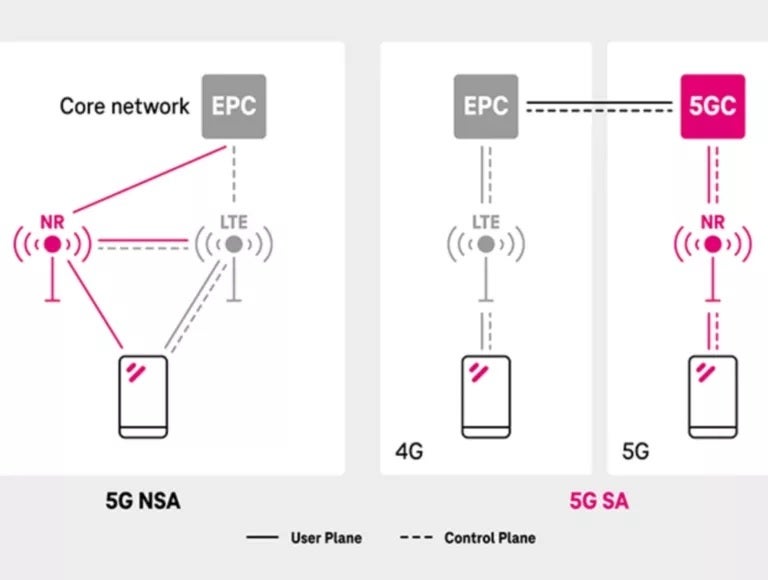T-Mobile originally started using its SA 5G network with the low-band 600MHz airwaves it employs for its nationwide 5G service. The wireless provider says that “swaths” of its mid-band 2.5GHz spectrum, used for its faster 5G Ultra Capacity service, now support standalone 5G. This will help T-Mobile launch 5G-Advanced which offers enhanced 5G delivering to subscribers faster speeds and lower latency while allowing the carrier to handle larger amounts of traffic with no issues.
Ewaldsson says that 5G-Advanced will debut at the end of the year. “We’re going to be introducing a technology called L4S,” the T-Mobile executive said. It stands for Low Latency, Low Loss, Scalable throughput. L4S will improve the video experience for different apps. “It’s a video priority technology that creates a better video experience for different applications,” Ewaldsson said.

T-Mobile diagram shows how standalone 5G networks (R) do not use a 4G core for improved performance. | Image credit-T-Mobile
Explaining how this works, the T-Mobile executive says that when the network is congested, “there is signaling going from the network to the app that tells it to slow down the bit-rates to adapt to the conditions, so you always get optimal rates through for whatever video you’re watching.” Analysts agree that L4S will improve video streaming over 5G. Retcon Analytics analyst Daryl Schoolar says that besides video streaming, the technology will also improve critical communications, and improve the gaming experience.
Other features that T-Mobile will soon enable over its 5G SA network include network slicing and VoNR (Voice-over-New Radio). Network slicing allows the infrastructure of the network to be divided up into slices with individual characteristics that meet the requirements of different applications and services providing them with optimal service. VoNR enables voice calls to be carried over 5G networks rather than older 4G or 3G networks.
